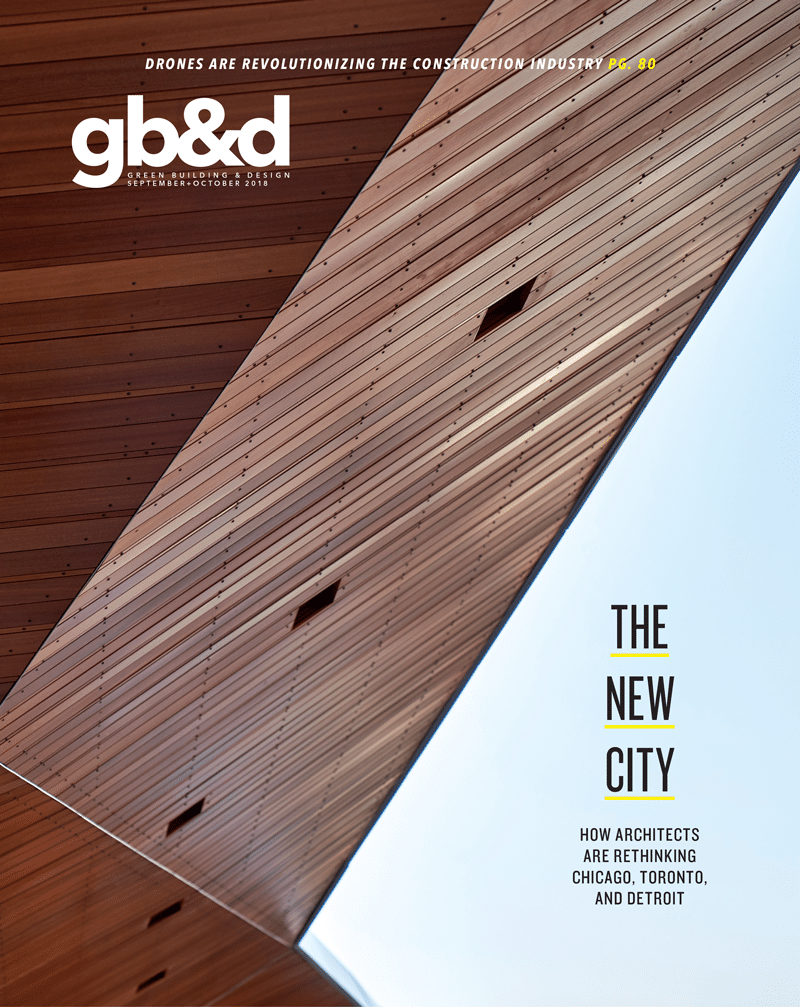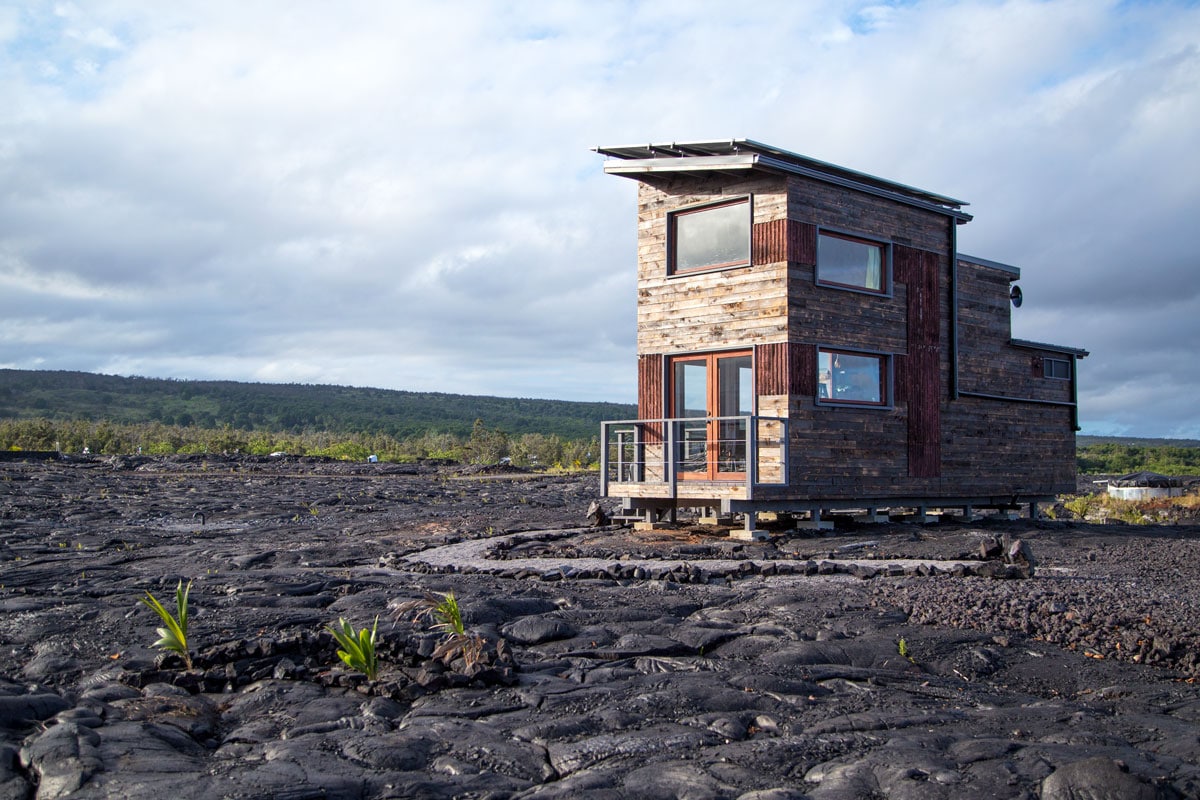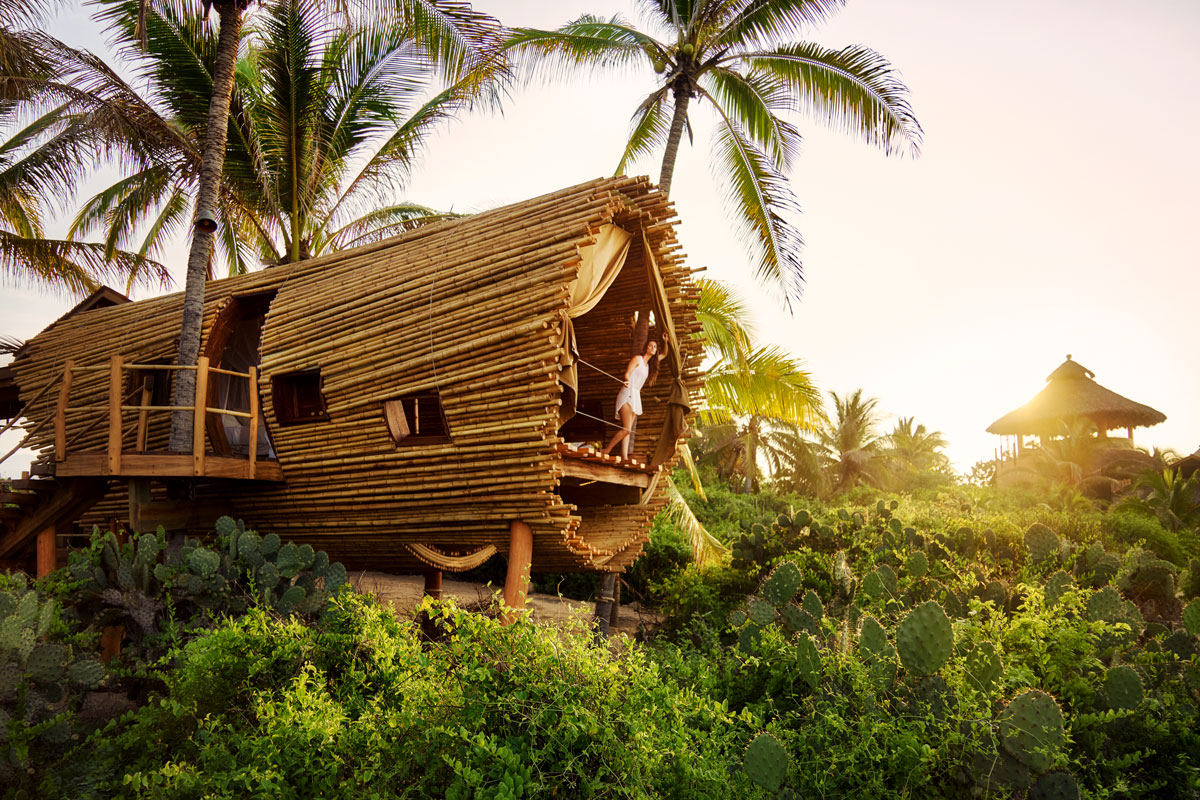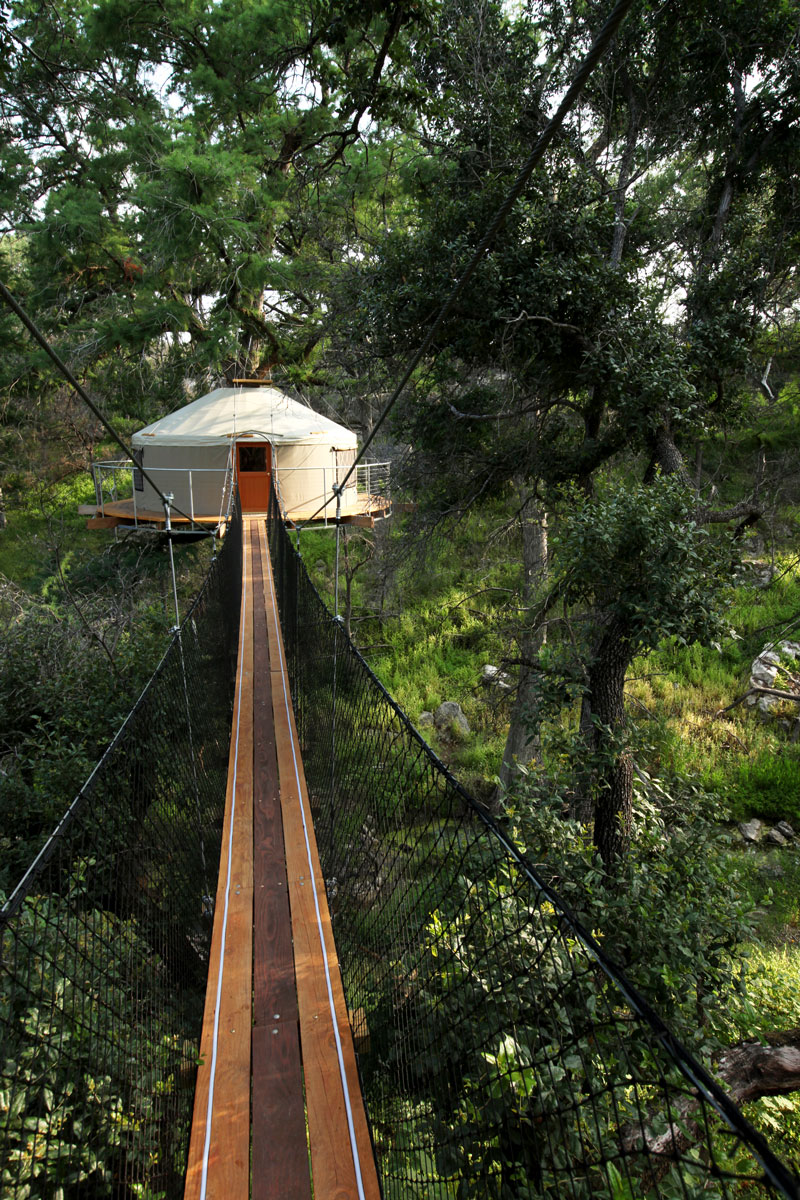
[Photo: Courtesy of ArtisTree]
Treehouse design and construction company ArtisTree makes sustainable design decisions.
In 2011, Will Beilharz was climbing redwood trees in Sonoma County, California. Complete with a harness and hammock, he slept in the trees overlooking the Pacific Ocean. As he relaxed in his hammock, fully at one with nature, he had an epiphany. “I needed to help people access this experience—to bring man back to nature,” Beilharz says.
So he decided to build homes that were literally supported by living, moving, breathing elements of nature—trees. Beilharz founded ArtisTree in 2012 and has become a leader in the industry, taking on everything from tiny homes to luxury rental treehouses and resorts. “It is giving people a new way to access nature and different ways to use their imagination,” he says.
Beilharz is not new to building in the trees. He became an industry expert in aerial construction while working at his family’s zip line canopy tour in Austin, Texas. Cypress Valley Canopy Tours was one of the first of its kind in the U.S., and Beilharz helped to build his first treehouse on the property in 2006 after people asked to stay in the trees. ArtisTree recently completed its fifth treehouse on the property.
FROM OUR SEPT+OCT 2018 ISSUE

The preferred publication of leading green professionals.

ArtisTree looks at how structures can enhance the environment. [Photo: Courtesy of ArtisTree]
It’s this notion of full immersion in nature that makes Playa Viva—ArtisTree’s eco-luxe treehouse resort in Mexico—the most rented of the facility. “It changes you. People come here and tell us they don’t think they will be able to stay in another place again,” says David Leventhal, principal at Playa Viva.
A Fresh Canvas
The ArtisTree team looks at each project as a work of art. In the same way that each new art project differs from the last, every treehouse is unique. “These are not just structures where people live, they are pieces of art within nature,” says Ben Newman, partner and designer at ArtisTree.
When ArtisTree is approached with an idea, its team of designers works together with the client to formulate a design that suits their needs. “It’s all about, ‘How can we collectively create this beautiful piece of functional art?’” Newman says.

[Photo: Courtesy of ArtisTree]
The variation between structures is also necessary because no two trees are alike. Once a location for a home is chosen, ArtisTree brings in a local arborist to determine the species, age, and health of the tree they plan to use. Then, they call in an engineer to calculate what the tree can hold. Once they have established that the tree is safe and healthy, they spend a fair amount of time climbing the tree and measuring elevations. The team makes adjustments as needed based on floodplains, roof heights, and layouts. “We have to construct our own little island in the air before we do anything else,” Newman says.
Giving Back to Nature
When ArtisTree takes on a project, they pay close attention to local resources and try to source as much as possible from the area. “We are going beyond LEED Platinum and net-zero. We look at how structures can improve an environment rather than just do no harm,” Beilharz says. “We are trying to make the world a better place through our existence. We are always looking for suppliers or ways of interacting that are elevating for everyone involved.”
Beilharz’s team also looks at the various health, safety, and sustainably sourced certifications for materials to make sure they are making the most responsible choices. Their goal is to use at least 80% recycled materials for the interior build-out, according to Newman.

From beachfront escapes to homes in the trees, ArtisTree is getting people outside and closer to nature. [Photo: Courtesy of ArtisTree]
When Newman gets on-site, he spends a lot of time looking around the area and harvesting reclaimed materials. He even sorts through people’s garbage and reaches out to pickers who have undertaken their own expeditions through garbage dumps and yard sales. “We live in a society where everything needs to be ‘pretty’ or ‘beautiful.’ If I can use trash to create something beautiful, then maybe I can help people to realize what is possible using recycled materials,” he says.
Sam and Erica Hawala, owners of the ArtisTree-built Ohana House (which sits on hardened lava in Hawaii) admit they were a little unsure when Newman found some old wire in the lava and asked if he could use it in their tiny home. He used the wire to construct a light for the kitchen. “The whole experience showed us you can live on the earth and live very gently,” Erica says.

[Photo: Courtesy of ArtisTree]
What’s Next?
Beilharz and his team are working on expanding ArtisTree beyond construction and design to its own hospitality brand centered around nature. “We are using regenerative design, architecture, and hospitality to help preserve and conserve legacy pieces of land,” Beilharz says. “We want people to be able to access these pieces of land and to have wonderful, amazing, restorative nature experiences.” ArtisTree is currently in the process of acquiring land for a treehouse resort in the San Francisco Bay Area.
The ArtisTree team is also working on a project with a client to design and build a tiny house community. The community will consist of 30-plus tiny homes to provide affordable, minimalist, sustainable living in Austin, Texas. “We are always looking for new clients who are interested in pushing the limits of what is possible for the built environment,” Beilharz says. “We want to create art and get outside the box.”
